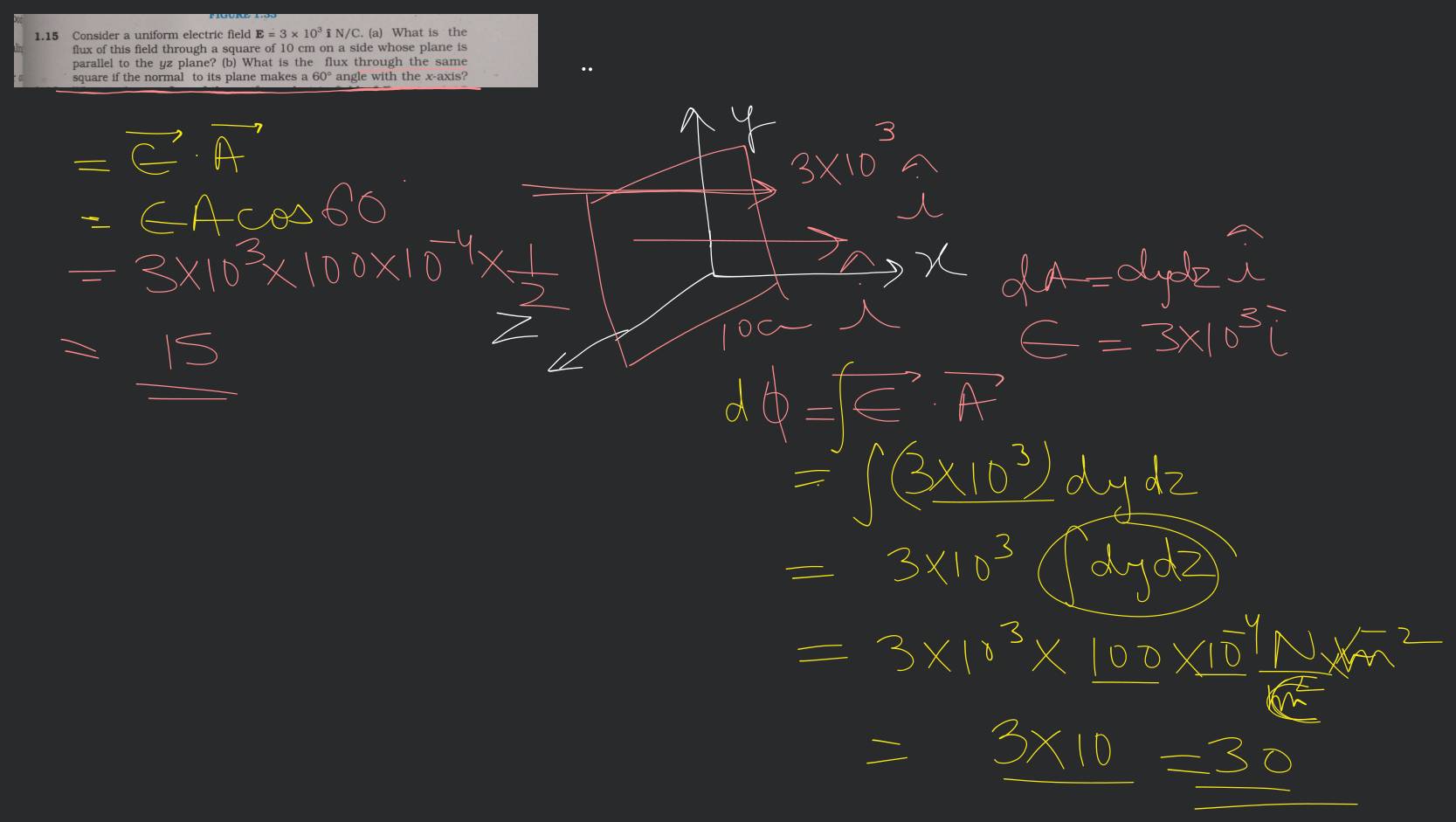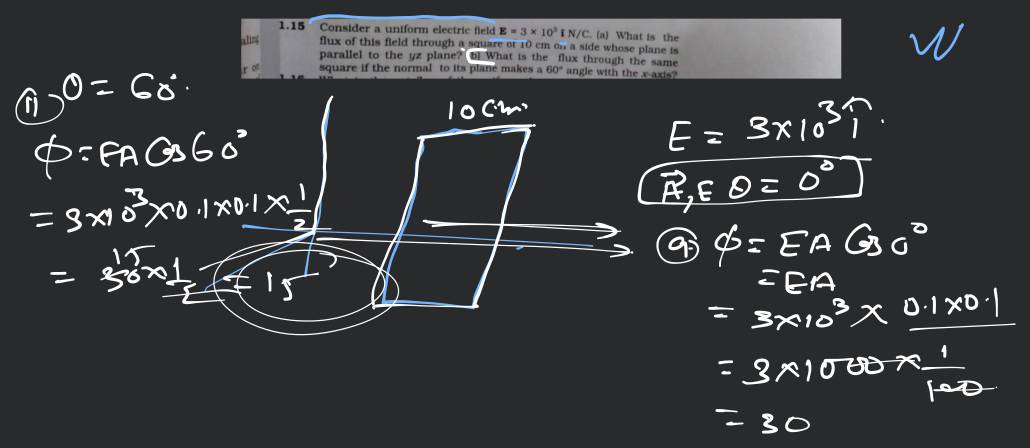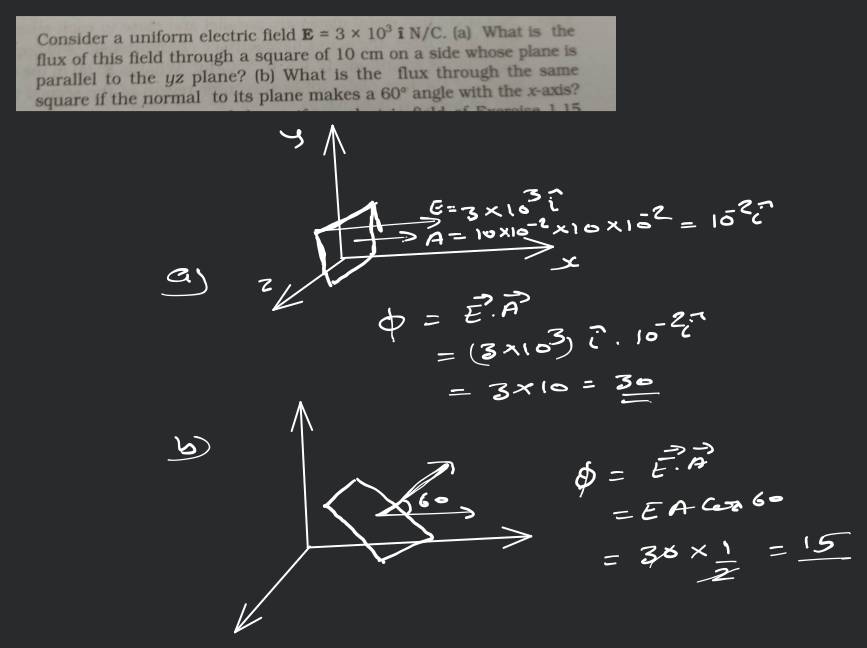Solving time: 3 mins
Consider a uniform electric field . (a) What is the flux of this field through a square of 10 cm on a side whose plane is parallel to the yz plane? (b) What is the flux through the same square if the normal to its plane makes a angle with the x-axis?
 Text solution
Text solution Verified
Verified
(a)
Electric field intensity, N/C
Magnitude of electric field intensity, N/C
Side of the square,
Area of the square,
The plane of the square is parallel to the y-z plane. Hence, angle between the unit vector normal to the plane and electric field,
Flux through the plane is given by the relation,
(b)
Plane makes an angle of with the x-axis. Hence,
Flux,
Filo tutor solutions (11)
Learn from their 1-to-1 discussion with Filo tutors.
Uploaded on: 7/10/2023
Uploaded on: 4/13/2023





Practice more questions from Physics Part-I (NCERT)
Practice questions from Physics Part-I (NCERT)
Views: 5,926
Views: 5,526
Views: 5,962
Views: 7,533
(b) Explain why two field lines never cross each other at any point?
Practice more questions from Electric Charges and Fields
Views: 5,956
Views: 6,314
Practice questions on similar concepts asked by Filo students
Views: 5,456
Views: 5,437
Views: 5,384
Views: 5,315


Stuck on the question or explanation?
Connect with our Physics tutors online and get step by step solution of this question.
| Question Text | Consider a uniform electric field . (a) What is the flux of this field through a square of 10 cm on a side whose plane is parallel to the yz plane? (b) What is the flux through the same square if the normal to its plane makes a angle with the x-axis? |
| Updated On | Dec 4, 2023 |
| Topic | Electric Charges and Fields |
| Subject | Physics |
| Class | Class 12 |
| Answer Type | Text solution:1 Video solution: 11 |
| Upvotes | 1202 |
| Avg. Video Duration | 5 min |






